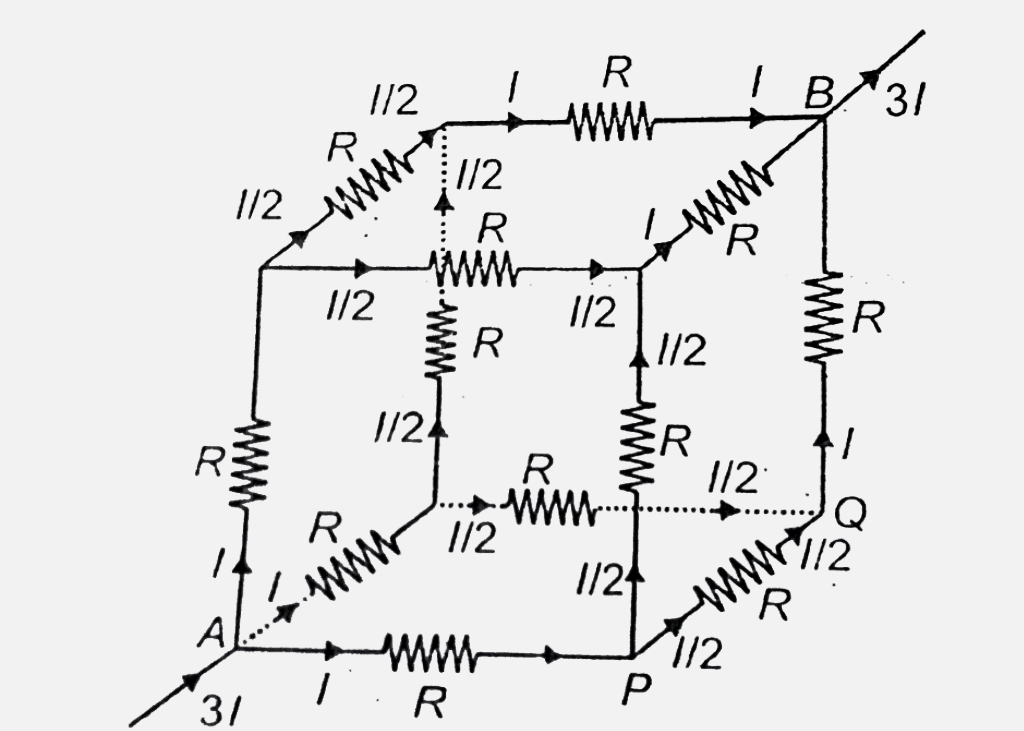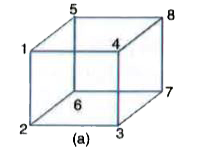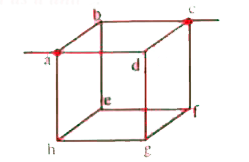12 identical wire each of resistance 6Ω are joined to form a cube. Find the resistance between the corner of edges of the cube.Solution in Assamese
Step by step video & image solution for 12 identical wire each of resistance 6Omega are joined to form a cube. Find the resistance between the corner of edges of the cube. by Physics experts to help you in doubts & scoring excellent marks in Class 12 exams.
Topper's Solved these Questions
Similar Questions
Differentiate between analog signal and digital signal.
05:21View SolutionFind the dimestion of Planck's constant.
07:53View SolutionTwelve identical wires each of resistance 6Ω are joined to from a skeleton cube. Find the resistance between the current of the same edge of the cube
02:53View SolutionEleven equal wires each of resistance r form the edges of a incomplete cube. Find the total resistance from one end of the vacant edge of the cube to the other.
05:52View SolutionA Rubik's cube of edge 3 cm is formed with 27 identical cubes. Find the edge of each identical cube.
15:17View SolutionTwelve wires, each of resistance 6Ω are connected to form a cube. The effective resistance between two diagonally opposite corners of the cube is
02:18View SolutionTwelve equal wires each of resistance rΩ form a cube. The effective resistance between the corners of the same edge of the cube is
06:44View Solution
Tweve identical resistance each of resistance R are joined to form a cube as shown in figure.
Find resistance of the combination across AB03:57View Solutionएक ही प्रकार के 12 तारों को जोड़कर जिनमे प्रत्येक का प्रतिरोध r है, घन के आकर का ढाँचा तैयार किया गया है। यदि धारा घन के एक कोने से प्रवेश करे तथा विपरीत कोने से बाहर निकले तो घन का तुल्य प्रतिरोध ज्ञात करें।
05:07View Solutionr प्रतिरोध वाली ग्यारह एकसमान तारों से एक सम्पूर्ण घन के किनारे बनाए जाते हैं। घन के खाली किनारे के एक कोने से दूसरे तक कुल प्रतिरोध निकालें।
03:57View Solution12 identical wires, each with resistance 24 Ω are interconnected to form a cube. Find equivalent resistance of this cube across its diagonally opposite points.
View Solution12 identical wires, each with resistance R are interconnected to form a cube. Find equivalent resistance of this cube across its diagonally opposite points.
View SolutionTwelve equal wires each of resistance r are joined to form a skeleton cube. Find the equivalent resistance between two corners on the same edge of the cube.
 06:20View Solution
06:20View SolutionTwelve wires, each having resistance r. are joined to form a cube as shown in figure. Find the equivalent resistance between the ends of a face diagonal such as a and c.
 05:31View Solution
05:31View SolutionA skeleton cube is made of 12 wires, each of resistance R. The resistance between any two adjacent comers of the cube is
05:41View Solution

